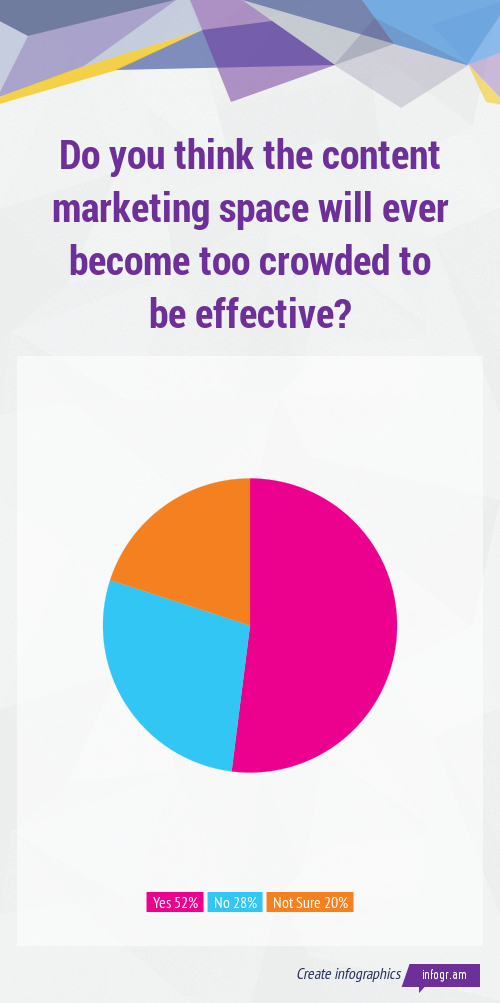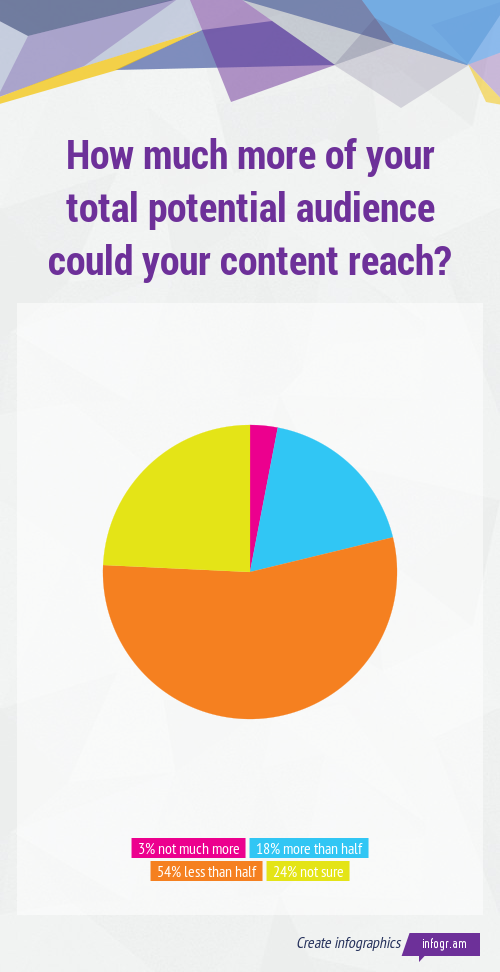By Mark Kersteen - August 27th, 2014
Last week, we held an Incite webinar on “The Future of Content”. During the webinar, we asked our listeners to answer two polls. Here are the results. You’ll find more on content at Incite Summit: East, and you can read all of the surveys we’ve done here.
There are two big questions that hang over content. How much longer will it last, and how big can it get? Well, we’re getting closer to an answer to both.
When I say “content”, I don’t mean content marketing as a whole big, shaggy concept. That’s never going away. I mean content as it currently stands; as a buzzword that means, “Intentionally producing useful or entertaining material for an audience of potential customers, but without pushing an overt marketing message.” This, like all slightly faddish concepts in marketing, will either become ingrained in everyday business and cease to be worthy of special attention, or stop yielding significant enough results and fade away. I am not sure which way content will go; it might go either, depending on where you work.
We asked the attendees of our content webinar to tell us what they thought:
Our first question was: Do you think the content marketing space will ever become too crowded to be effective?
52% Yes
28% No
20% Not sure
So let’s put this in perspective. Over half of the marketers we polled—marketers who joined our webinar because they had a preexisting interest in, and likely worked with, content—believe there will be a point when there's so much content that creating more won’t be worth pursuing. To me, that’s scary. Not because I think a day is going to come when people will stop making things and putting them on the internet (and when I’m out of a job and have to go learn how to code or something). It’s because there may well be a vanishing point for the perceived value of content. Once marketers stop thinking content is worth investing in, or if audiences become fatigued by it, it will start to dry up.
However, I think there’s a more likely outcome. If and when content’s numbers start to flag, instead of abandoning it, we’re going to see marketers forced to be more innovative. I think we’ll see new forms of content—video, digital, and the yet-unimaginable—vying to stand out from and above older forms. If audiences get sick of content completely, that’s another story. But, I think it’s important to remember that most people don’t classify what they read on the internet as “content”. To them, it’s just stuff, and everyone loves new stuff.
Our next question was: How much more of your total potential audience could your content reach?
3% not much more
18% more than half
54% less than half
24% not sure
This is the other side of the coin. Only 21% of our listeners felt they were even approaching audience saturation. So while content might lose effectiveness eventually, there’s still a lot of room to grow.
An important note on wording as well: “Audience” is a vague but necessary term. But referring to our audience as if it’s some fixed, permanent thing is completely off the mark. Audiences change constantly. Content is relevant or interesting to members of this imagined potential audience on a case-by-case bases. Or circumstances shift, and they no longer need what you’re selling. Often, your own products or services change, and suddenly you need to be reaching a whole new group of people.
So, it’s a flawed way of looking at content. But, while I’m not sure there’s a better way, I am sure that there are still plenty of people out there who, without realizing it, want to engage with your content.
Now, it’s just a matter of reaching them.
Stay tuned, we’ll be running webinars every month, and September is going to be on multichannel marketing. For more insight like this from top marketing professionals, check out Incite: Summit East.
Image by Fotolia.


